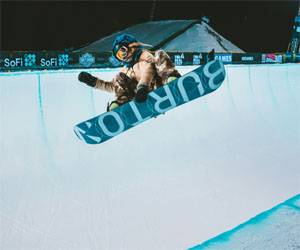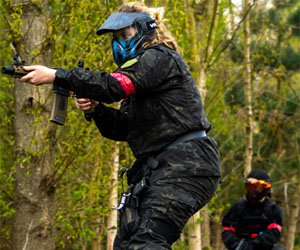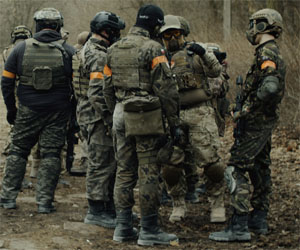


Key Sports Injury Prevention Principles

Engaging in sports and physical activities is not only a source of enjoyment but also a means of promoting physical fitness and overall well-being. However, sports-related injuries can be a significant obstacle to athletic progress. To ensure a safe and rewarding sports experience, athletes must adhere to key injury prevention principles. In this article, we'll explore these principles to help you stay injury-free and continue excelling in your chosen sport.
1. Warm-Up And Cool-Down: The warm-up and cool-down routines are fundamental to injury prevention. A proper warm-up involves light aerobic exercises, dynamic stretching, and mobility drills to prepare the body for physical activity. The cool-down includes static stretching and gentle exercises to gradually decrease heart rate and prevent muscle tightness.
2. Strength And Conditioning: Maintaining overall body strength and conditioning is crucial to injury prevention. A well-rounded strength training program helps stabilize joints, improve muscle balance, and enhance overall physical resilience.
3. Flexibility And Mobility: Flexibility is key to injury prevention. Incorporating regular stretching exercises into your routine improves joint range of motion and reduces the risk of muscle strains and tears. Dynamic stretching before activity and static stretching afterward are both beneficial.
4. Proper Technique And Form: One of the primary causes of sports injuries is incorrect form and technique. To prevent injuries, athletes should receive proper coaching to ensure they are using correct form when participating in their sport.
5. Gradual Progression: Avoid the temptation to push your limits too quickly. Progress should be gradual and based on your current fitness level. Rapidly increasing the intensity or duration of workouts can lead to overuse injuries.
6. Listen To Your Body: Pain is a signal from your body that something is wrong. Ignoring pain or discomfort can lead to more severe injuries. If you experience pain during physical activity, stop immediately and seek medical advice.
7. Appropriate Footwear: Wearing the right footwear for your specific sport is crucial. Ill-fitting or worn-out shoes can lead to instability and injury. Consult experts or specialists to choose the correct footwear for your needs.
8. Cross-Training: Incorporating a variety of activities into your training regimen is an effective injury prevention strategy. Cross-training helps avoid overuse injuries by using different muscle groups and movements.
9. Hydration And Nutrition: Proper hydration and nutrition are essential for athletic success and injury prevention. Dehydration can lead to muscle cramps, while a well-balanced diet provides the necessary fuel for optimal performance and recovery.
10. Rest And Recovery: Athletes need adequate rest and recovery to perform at their best and reduce injury risk. Overtraining can lead to fatigue and increased vulnerability to injury. Plan rest days into your training schedule and prioritize quality sleep.
11. Injury Prevention Workshops: Many sports organizations offer injury prevention workshops and classes. These sessions provide athletes with specific techniques to prevent injuries in their chosen sport and often include expert insights.
12. Consultation With Healthcare Professionals: If you have pre-existing conditions or are unsure about your fitness routine's suitability, consult healthcare professionals, physical therapists, or sports medicine experts. They can offer personalized guidance for injury prevention.
Adhering to these sports injury prevention principles is essential for athletes looking to safeguard their well-being and athletic success. By incorporating these principles into your training and competition, you can reduce the risk of injuries, allowing you to enjoy your sport while striving for excellence. Remember, a balanced approach, proper coaching, and attentive self-care are the keys to a safe and rewarding sports experience.
 Camping invites us to step away from our comfort zones and immerse ourselves in the raw beauty of the natural world. Whether it's the grandeur of towering mountains, the tranquility of a hidden forest glade, or the picturesque views from a lakeside campsite, the allure of camping is found in the awe-inspiring landscapes that become our temporary home. These settings are the backdrop to unforgettable experiences and treasured memories.
Camping invites us to step away from our comfort zones and immerse ourselves in the raw beauty of the natural world. Whether it's the grandeur of towering mountains, the tranquility of a hidden forest glade, or the picturesque views from a lakeside campsite, the allure of camping is found in the awe-inspiring landscapes that become our temporary home. These settings are the backdrop to unforgettable experiences and treasured memories.
Moreover, camping is a return to the basics of life, a reminder that we can thrive with less. Building a campfire, setting up a simple tent, and cooking a meal over an open flame are acts that connect us to our primal instincts. They allow us to appreciate the resources provided by the wilderness and foster self-sufficiency, independence, and resourcefulness.
The allure of camping is not only about connecting with nature but also about forging connections with our loved ones. Campfires become the gathering place for stories, laughter, and shared experiences.
A Unique Connection
 The counterculture movement of the 1960s and 1970s was a response to the prevailing social norms and institutions of the time. It championed ideas of peace, love, and freedom, and questioned traditional authority and societal values. It was during this era that flying disc sports emerged as a form of recreational and competitive activities that perfectly aligned with the counterculture's ethos.
The counterculture movement of the 1960s and 1970s was a response to the prevailing social norms and institutions of the time. It championed ideas of peace, love, and freedom, and questioned traditional authority and societal values. It was during this era that flying disc sports emerged as a form of recreational and competitive activities that perfectly aligned with the counterculture's ethos.
One of the most iconic flying disc sports, Ultimate Frisbee, was born in 1968 when a group of students at Columbia High School in Maplewood, New Jersey, came up with a new game involving a Frisbee. They emphasized self-officiation, teamwork, and a rejection of traditional hierarchy, mirroring the counterculture's principles of grassroots empowerment and autonomy.
Unleashing The Thrill Of The Mountain
 2. Ollies And Nollies: Ollies are versatile tricks where the rider pops the board into the air by shifting their weight and pushing down on the tail. Nollies are similar but initiated by pushing down on the nose. These tricks are the foundation for more advanced maneuvers and add an element of creativity to your riding.
2. Ollies And Nollies: Ollies are versatile tricks where the rider pops the board into the air by shifting their weight and pushing down on the tail. Nollies are similar but initiated by pushing down on the nose. These tricks are the foundation for more advanced maneuvers and add an element of creativity to your riding.
3. Spins: Spinning is a dynamic component of snowboarding stunts. Start with 180-degree spins (half-cab) and work your way up to 360s, 540s, and even 720s. The key is using your upper body to initiate the spin while keeping your lower body aligned with the board.
4. Flips And Inverts: Flips and inverts take snowboarding to the next level. Tricks like backflips and front flips involve rotating your body while airborne. Inverts, such as handplants or hand drags, add an acrobatic twist to your riding. These tricks demand skill, precision, and a fearless spirit.
5. Rails And Boxes: Terrain park features like rails, boxes, and wallrides provide opportunities for grinding tricks. Practice slides, presses, and jibs on these features to enhance your trick repertoire. Sliding down a rail with style requires balance, precision, and confidence.
6. The 720 And Beyond: Mastering the 720 is a significant milestone for snowboarders. A 720 is a double spin where you complete two full rotations in the air.
The Essentials For Riding The Waves
 Surfboard: The surfboard is the heart and soul of surfing. Surfboards come in various shapes, sizes, and designs to suit different conditions and riding styles. Shortboards for advanced maneuvers, longboards for stability, and funboards for versatility are just a few examples. The choice of the right surfboard is a crucial decision for any surfer.
Surfboard: The surfboard is the heart and soul of surfing. Surfboards come in various shapes, sizes, and designs to suit different conditions and riding styles. Shortboards for advanced maneuvers, longboards for stability, and funboards for versatility are just a few examples. The choice of the right surfboard is a crucial decision for any surfer.
Leash: A leash, also known as a leg rope, is an essential safety item. It attaches to the tail of your surfboard and to your ankle, ensuring that you won't lose your board in the waves. This not only prevents accidents but also helps you conserve energy by reducing the need to constantly swim back to your board.
Wetsuit: A wetsuit is a surfers' best friend in cold water or inclement weather. It provides insulation to keep you warm and buoyant in the water. Wetsuits come in different thicknesses and styles, allowing surfers to choose the right one for their specific needs.
Rash Guard: A rash guard is a lightweight, quick-drying shirt that offers sun protection and minimizes skin irritation caused by friction against the surfboard or wax. It's a must-have for extended surf sessions and protection from harmful UV rays.
Surf Wax: Surf wax is applied to the deck of the surfboard to provide traction. It prevents slipping, ensuring that you can maintain balance and control while riding the waves. Different waxes are available for varying water temperatures.
A Game-Changer On The Field
 The Importance Of Precision Shots In Paintball
The Importance Of Precision Shots In Paintball
Precision shots in paintball are all about hitting your target with accuracy and effectiveness. These shots are more than just an impressive display of marksmanship; they are a fundamental aspect of the game that can have a significant impact for several reasons:
1. Conservation Of Resources: Paintballs are a finite resource, and running out of ammunition can leave you vulnerable. Making each shot count through precision shooting not only eliminates opponents but also helps conserve your paintballs for crucial moments.
2. Elimination Of Opponents: The primary objective in paintball is to eliminate opponents. Precision shots increase your chances of hitting your target, ensuring that they are eliminated from the game. Fewer opponents mean a better chance of securing victory.
3. Gaining Strategic Advantage: Precision shots can create strategic advantages by eliminating key players on the opposing team. When you take out the enemy's sharpshooters or players responsible for carrying objectives, it disrupts their plans and can lead to opportunities for your team.
4. Staying Concealed: When you hit your target with precision, they are less likely to know your exact location.






Embracing The Wonders Of Winter
 2. The Art Of Snow Sports: Snow sports are at the heart of unbridled adventure in the snow. Skiing and snowboarding are classic favorites, providing the sensation of gliding down pristine slopes surrounded by snow-capped peaks. The mountain resorts become a playground for novices and seasoned enthusiasts alike, where the thrill of mastering the slopes is both a challenge and a delight.
2. The Art Of Snow Sports: Snow sports are at the heart of unbridled adventure in the snow. Skiing and snowboarding are classic favorites, providing the sensation of gliding down pristine slopes surrounded by snow-capped peaks. The mountain resorts become a playground for novices and seasoned enthusiasts alike, where the thrill of mastering the slopes is both a challenge and a delight.
3. Snowshoeing And Cross-Country Skiing: For those seeking a slower-paced adventure, snowshoeing and cross-country skiing offer an opportunity to venture deep into the winter wilderness. These activities allow exploration of snow-covered forests, tranquil meadows, and hidden alpine lakes, providing a connection with nature that's hard to match.
4. The Call Of The Wilderness: Unbridled adventure in the snow also beckons those who crave a more rugged experience. Backcountry skiing and snowboarding allow for off-piste exploration, where untouched, deep powder snow awaits the intrepid explorer. These pursuits require knowledge of avalanche safety and the ability to navigate through remote, unpatrolled terrain.
5. Ice Climbing: For the ultimate winter adventure, ice climbing takes courage and skill to the next level. Climbers ascend frozen waterfalls and ice-covered rock faces, pushing their limits and embracing the wild beauty of ice formations.
6. Dog Sledding: In the far reaches of the snowy wilderness, dog sledding offers a unique and authentic adventure. Guiding a team of enthusiastic sled dogs through the snowy landscapes evokes a sense of discovery and a connection with the roots of winter exploration.
7. Snowmobiling: Snowmobiling provides an adrenaline-packed way to explore vast snowy expanses. These machines offer the freedom to cover great distances in the snow, from groomed trails to remote backcountry areas.
Paintball Strategy And Coordination
 The Role Of Strategy In Paintball
The Role Of Strategy In Paintball
Paintball is not just about firing paint-filled projectiles at opponents; it's about outthinking them. A successful paintball strategy serves as a blueprint for achieving objectives and gaining the upper hand. Here's why strategy matters:
Objective Achievement: In many paintball games, the goal is not just to eliminate opponents but to achieve specific objectives, such as capturing flags or holding positions. A well-thought-out strategy guides the team in achieving these objectives.
Resource Management: Paintballs are finite resources, so effective strategy helps conserve ammunition and use it judiciously. Proper resource management can be a game-saver.
Adaptability: A sound strategy provides a framework, but it must also be adaptable. As the game evolves and circumstances change, a team should be able to adjust its tactics to suit the situation.
Tactical Advantage: Strategic planning can create tactical advantages by anticipating the opponent's moves and positioning your team accordingly. It's about setting up the chessboard before the game begins.
The Power Of Coordination
Effective coordination among team members is another crucial component of success in paintball. Coordination involves seamless communication, teamwork, and synchronized execution of tactics. Here's why it's essential:
Communication: Clear and timely communication is the lifeblood of any team's success. Players must share information about enemy positions, plans, and movements to make informed decisions.